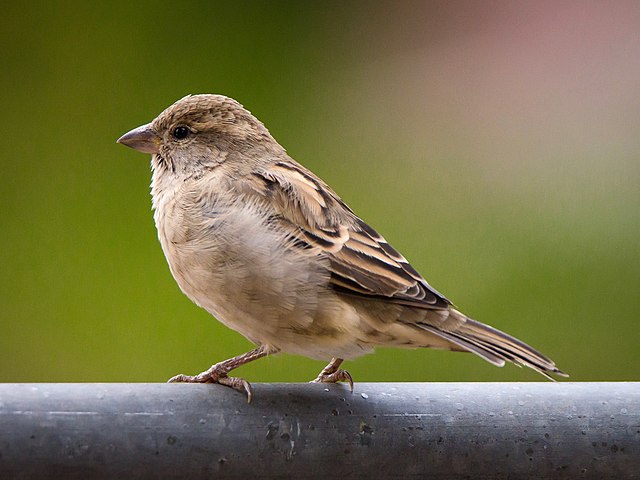이미지 분류는 이미지가 나타내는 내용을 식별하기 위해 머신 러닝을 활용하는 일반적인 예입니다. 예를 들어 주어진 그림에 어떤 종류의 동물이 나타나는지 알고 싶을 수 있습니다. 이미지가 나타내는 내용을 예측하는 작업을 이미지 분류라고 합니다. 이미지 분류자는 다양한 이미지 클래스를 인식하도록 훈련됩니다. 예를 들어 모델은 토끼, 햄스터, 개 등 세 가지 동물 유형을 나타내는 사진을 인식하도록 훈련될 수 있습니다. 이미지 분류 자에 대한 자세한 내용은 이미지 분류 개요를 참조하세요.
작업 라이브러리 ImageClassifier API를 사용하여 사용자 정의 이미지 분류자 또는 사전 훈련된 분류자를 모델 앱에 배포합니다.
ImageClassifier API의 주요 기능
회전, 크기 조정 및 색 공간 변환을 포함한 입력 이미지 처리
입력 이미지의 관심 영역
레이블 맵 로케일
결과를 필터링하기 위한 스코어 임계값
Top-k 분류 결과
레이블 허용 목록 및 거부 목록
지원되는 이미지 분류자 모델
다음 모델은 ImageClassifier API와의 호환성이 보장됩니다.
이미지 분류용 TensorFlow Lite Model Maker에 의해 만들어진 모델
AutoML Vision Edge 이미지 분류로 만들어진 모델
모델 호환성 요구 사항을 충족하는 사용자 정의 모델
Java에서 추론 실행하기
Android 앱에서 ImageClassifier를 사용하는 방법의 예는 이미지 분류 참조 앱을 참조하세요.
1단계: Gradle 종속성 및 기타 설정 가져오기
.tflite 모델 파일을 모델이 실행될 Android 모듈의 assets 디렉토리에 복사합니다. 파일을 압축하지 않도록 지정하고 TensorFlow Lite 라이브러리를 모듈의 build.gradle 파일에 추가합니다.
android {
// Other settings
// Specify tflite file should not be compressed for the app apk
aaptOptions {
noCompress "tflite"
}
}
dependencies {
// Other dependencies
// Import the Task Vision Library dependency (NNAPI is included)
implementation 'org.tensorflow:tensorflow-lite-task-vision'
// Import the GPU delegate plugin Library for GPU inference
implementation 'org.tensorflow:tensorflow-lite-gpu-delegate-plugin'
}
2단계: 모델 사용하기
// Initialization
ImageClassifierOptions options =
ImageClassifierOptions.builder()
.setBaseOptions(BaseOptions.builder().useGpu().build())
.setMaxResults(1)
.build();
ImageClassifier imageClassifier =
ImageClassifier.createFromFileAndOptions(
context, modelFile, options);
// Run inference
List<Classifications> results = imageClassifier.classify(image);
ImageClassifier 구성에 대한 추가 옵션은 소스 코드 및 javadoc를 참조하세요.
iOS에서 추론 실행하기
1단계: 종속성 설치하기
작업 라이브러리는 CocoaPods를 사용한 설치를 지원합니다. 시스템에 CocoaPods가 설치되어 있는지 확인하세요. 지침은 CocoaPods 설치 가이드를 참조하세요.
Xcode 프로젝트에 포드를 추가하는 방법에 대한 자세한 내용은 CocoaPods 가이드를 참조하세요.
Podfile에 TensorFlowLiteTaskVision 포드를 추가합니다.
target 'MyAppWithTaskAPI' do
use_frameworks!
pod 'TensorFlowLiteTaskVision'
end
추론에 사용할 .tflite 모델이 앱 번들에 있어야 합니다.
2단계: 모델 사용하기
Swift
// Imports
import TensorFlowLiteTaskVision
// Initialization
guard let modelPath = Bundle.main.path(forResource: "birds_V1",
ofType: "tflite") else { return }
let options = ImageClassifierOptions(modelPath: modelPath)
// Configure any additional options:
// options.classificationOptions.maxResults = 3
let classifier = try ImageClassifier.classifier(options: options)
// Convert the input image to MLImage.
// There are other sources for MLImage. For more details, please see:
// https://developers.google.com/ml-kit/reference/ios/mlimage/api/reference/Classes/GMLImage
guard let image = UIImage (named: "sparrow.jpg"), let mlImage = MLImage(image: image) else { return }
// Run inference
let classificationResults = try classifier.classify(mlImage: mlImage)
Objective C
// Imports
#import <TensorFlowLiteTaskVision/TFLTaskVision.h>
// Initialization
NSString *modelPath = [[NSBundle mainBundle] pathForResource:@"birds_V1" ofType:@"tflite"];
TFLImageClassifierOptions *options =
[[TFLImageClassifierOptions alloc] initWithModelPath:modelPath];
// Configure any additional options:
// options.classificationOptions.maxResults = 3;
TFLImageClassifier *classifier = [TFLImageClassifier imageClassifierWithOptions:options
error:nil];
// Convert the input image to MLImage.
UIImage *image = [UIImage imageNamed:@"sparrow.jpg"];
// There are other sources for GMLImage. For more details, please see:
// https://developers.google.com/ml-kit/reference/ios/mlimage/api/reference/Classes/GMLImage
GMLImage *gmlImage = [[GMLImage alloc] initWithImage:image];
// Run inference
TFLClassificationResult *classificationResult =
[classifier classifyWithGMLImage:gmlImage error:nil];
TFLImageClassifier 구성에 대한 추가 옵션은 소스 코드를 참조하세요.
Python에서 추론 실행하기
1단계: pip 패키지 설치하기
pip install tflite-support
2단계: 모델 사용하기
# Imports
from tflite_support.task import vision
from tflite_support.task import core
from tflite_support.task import processor
# Initialization
base_options = core.BaseOptions(file_name=model_path)
classification_options = processor.ClassificationOptions(max_results=2)
options = vision.ImageClassifierOptions(base_options=base_options, classification_options=classification_options)
classifier = vision.ImageClassifier.create_from_options(options)
# Alternatively, you can create an image classifier in the following manner:
# classifier = vision.ImageClassifier.create_from_file(model_path)
# Run inference
image = vision.TensorImage.create_from_file(image_path)
classification_result = classifier.classify(image)
ImageClassifier 구성에 대한 추가 옵션은 소스 코드를 참조하세요.
C++에서 추론 실행하기
// Initialization
ImageClassifierOptions options;
options.mutable_base_options()->mutable_model_file()->set_file_name(model_path);
std::unique_ptr<ImageClassifier> image_classifier = ImageClassifier::CreateFromOptions(options).value();
// Create input frame_buffer from your inputs, `image_data` and `image_dimension`.
// See more information here: tensorflow_lite_support/cc/task/vision/utils/frame_buffer_common_utils.h
std::unique_ptr<FrameBuffer> frame_buffer = CreateFromRgbRawBuffer(
image_data, image_dimension);
// Run inference
const ClassificationResult result = image_classifier->Classify(*frame_buffer).value();
ImageClassifier 구성에 대한 추가 옵션은 소스 코드를 참조하세요.
예제 결과
다음은 새 분류자의 분류 결과를 보여주는 예입니다.

Results:
Rank #0:
index : 671
score : 0.91406
class name : /m/01bwb9
display name: Passer domesticus
Rank #1:
index : 670
score : 0.00391
class name : /m/01bwbt
display name: Passer montanus
Rank #2:
index : 495
score : 0.00391
class name : /m/0bwm6m
display name: Passer italiae
자체 모델 및 테스트 데이터로 ImageClassifier를 위한 간단한 CLI 데모 도구를 사용해 보세요.
모델 호환성 요구 사항
ImageClassifier API는 필수 TFLite 모델 메타데이터가 있는 TFLite 모델을 예상합니다. TensorFlow Lite Metadata Writer API를 사용하여 이미지 분류자에 대한 메타데이터를 생성하는 예를 참조하세요.
호환되는 이미지 분류자 모델은 다음 요구 사항을 충족해야 합니다.
입력 이미지 텐서(kTfLiteUInt8/kTfLiteFloat32)
- 이미지 입력 크기는
[batch x height x width x channels]입니다. - 배치 추론은 지원되지 않습니다(
batch는 1이어야 함). - RGB 입력만 지원됩니다(
channels은 3이어야 함). - 유형이 kTfLiteFloat32인 경우, 입력 정규화를 위해 NormalizationOptions를 메타데이터에 첨부해야 합니다.
- 이미지 입력 크기는
출력 점수 텐서(kTfLiteUInt8/kTfLiteFloat32)
N클래스와 2 또는 4 차원, 즉[1 x N]또는[1 x 1 x 1 x N]- 선택적(그러나 권장함) 레이블 맵은 한 줄에 하나의 레이블을 포함하여 TENSOR_AXIS_LABELS 유형의 AssociatedFile-s로 매핑할 수 있습니다. 예제 레이블 파일을 참조하세요. 이러한 첫 번째 AssociatedFile(있는 경우)은 결과의
label필드(C++에서class_name으로 명명됨)를 채우는 데 사용됩니다.display_name필드는 생성 시 사용된ImageClassifierOptions의display_names_locale필드와 로케일이 일치하는 AssociatedFile(있는 경우)로부터 채워집니다(기본적으로 "en", 즉 영어). 이들 중 어느 것도 사용할 수 없는 경우, 결과의index필드만 채워집니다.
